For plants, humans, and animals, water is an essential part of life. This is one of the reasons so many of the world’s cities have been established along rivers. They provide drinking water, food, transportation, and even artistic inspiration.
Rivers come in many forms: they can be wide or narrow, fast or slow — some wind through mountains, and others course through valleys. Fed by rainwater or snowmelt, they are all directed by gravity.
In this post, we’ll list the 15 longest rivers in the world. Each of these rivers has a massive global impact and has helped to shape the world around it.
What is the longest river in the world?
It is widely agreed that the longest river in the world is the Nile. With a length of 6,650 km (4,130 mi), it holds the Guinness World Record for the longest river in the world and passes through eleven different African countries.
How do you measure a river?
Measuring a river can be tricky business. Rivers are constantly changing, and their beginnings and endings are notoriously hard to define. The source of a river can take the form of an underground spring, or it can be located at the congregation of several smaller streams that join to form a river. The exact point at which it becomes a river can be difficult to determine in this case.
The process becomes even more complicated when you consider the fidelity of the measurements being taken. The higher the fidelity used while measuring a coastline, the longer its measurement will be.
While there is conflicting information regarding the lengths of the rivers below, the order in which they appear is generally agreed upon.
| Rank | River Name | Length | Countries |
| 1 | Nile | 6,650 km (4,130 mi) | Ethiopia, Eritrea, Sudan, Uganda, Tanzania, Kenya, Rwanda, Burundi, Egypt, Democratic Republic of the Congo, South Sudan |
| 2 | Amazon | 6,400 km (3,976 mi) | Brazil, Peru, Bolivia, Colombia, Ecuador, Venezuela, Guyana |
| 3 | Yangtze | 6,300 km (3,917 mi) | China |
| 4 | Mississippi | 6,275 km (3,902 mi) | United States, Canada |
| 5 | Yenisey | 5,539 km (3,445 km) | Russia, Mongolia |
| 6 | Yellow | 5,464 km (3,395 km) | China |
| 7 | Ob-Irtysh | 5,410 km (3,364 km) | Russia, Kazakhstan, China, Mongolia |
| 8 | Río de la Plata | 4,880 km (3,030 km) | Brazil, Argentina, Paraguay, Bolivia, Uruguay |
| 9 | Congo | 4,700 km (2,922 km) | Democratic Republic of the Congo, Central African Republic, Angola, Republic of the Congo, Tanzania, Cameroon, Zambia, Burundi, Rwanda |
| 10 | Amur | 4,444 km (2,763 mi) | Russia, China, Mongolia |
| 11 | Lena | 4,400 km (2,736 mi) | Russia |
| 12 | Mekong | 4,350 km (2,705 mi) | China, Myanmar, Laos, Thailand, Cambodia, Vietnam |
| 13 | Mackenzie | 4,241 km (2,637 mi) | Canada |
| 14 | Niger | 4,200 km (2,611 mi) | Nigeria, Mali, Niger, Algeria, Guinea, Cameroon, Burkina Faso, Côte d’Ivoire, Benin, Chad |
| 15 | Brahmaputra | 3,969 km (2,466 mi) | India, China, Nepal, Bangladesh, Bhutan |
Map of the Longest Rivers in the World
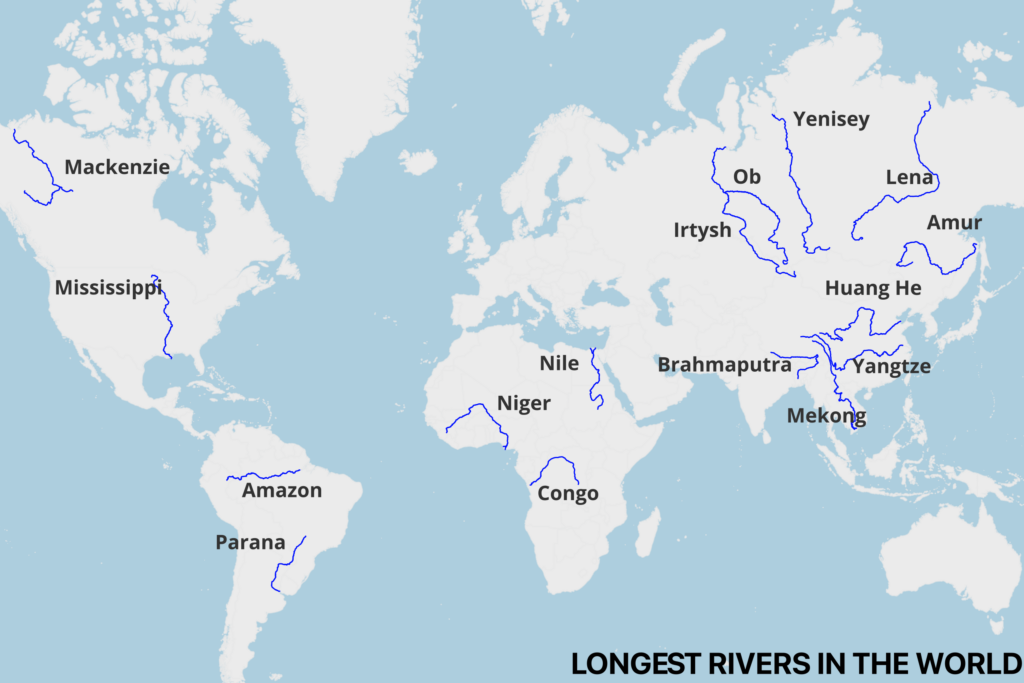
15. Brahmaputra
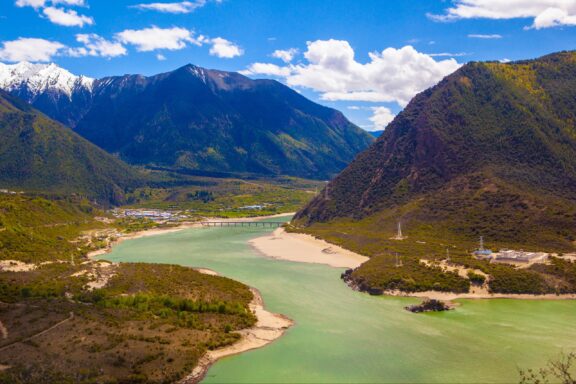
Length: 3,969 km (2,466 mi)
The Brahmaputra River passes through five Asian countries on its way from the Himalayas to the Bay of Bengal. It joins the Ganges River in the Ganges Delta before joining the Meghna River. The river’s name means “son of Brahma” in Sanskrit.
Running for almost 4,000 km, the Brahmaputra plays an important role in irrigation and transportation in the region. Nearly the entire length of the river is navigable, though Himalayan snow melt and heavy monsoon rains make the Brahmaputra susceptible to flooding that can cause catastrophic damage.
14. Niger
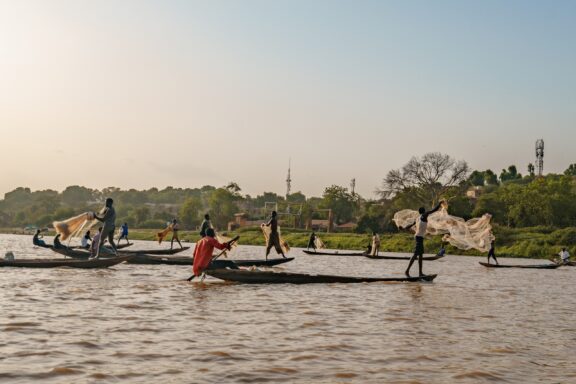
Length: 4,200 km (2,611 mi)
The 14th longest river in the world is the Niger, which is the main river in West Africa and the third longest on the continent. It passes through 11 different countries and has many different names in the different languages of the regions it passes through.
Most of the Niger River’s water is relatively clear due to its low level of silt. The river floods annually, a phenomenon that makes fishing and agriculture in the Inner Niger Delta particularly productive.
The Niger Valley was the heart of the Mali and Songhai empires between the 13th and 16th centuries, though it is now sparsely inhabited.
13. Mackenzie
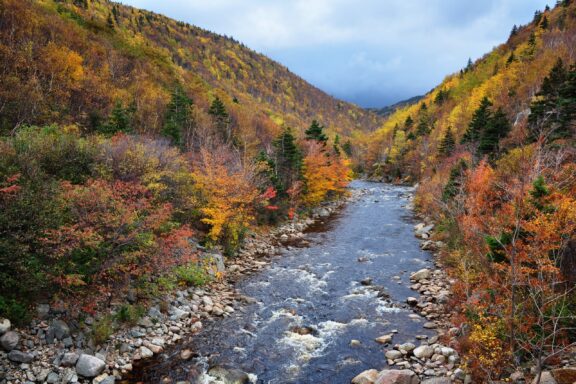
Length: 4,241 km (2,637 mi)
Located in the Canadian Boreal Forest, the Mackenzie River — joined by the Slave, Peace, and Finlay rivers — is the longest river in Canada and the second longest in North America. The Mackenzie flows north-northwest from its origin at Great Slave Lake, one of the largest lakes in the world, and empties into the Arctic Ocean.
The Mackenzie River Basin is sparsely populated. There are approximately 400,000 people living in mostly Indigenous communities that are often only accessible by air or water. The communities and ecosystems in the region are affected by factors such as climate change and pollution from industrial development.
12. Mekong
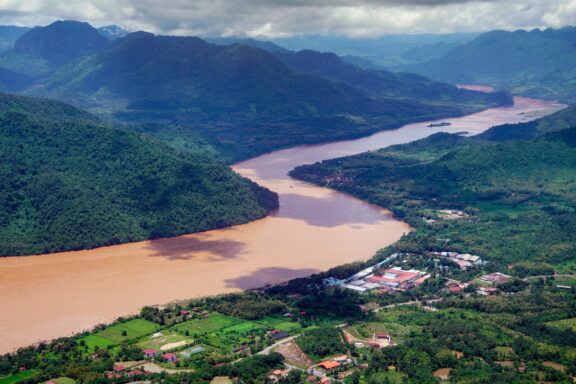
Length: 4,350 km (2,705 mi)
The Mekong River flows from China through five other countries in Southeast Asia before emptying into the South China Sea via the Mekong Delta, south of Vietnam’s Ho Chi Minh City. There are two capital cities that are situated on the banks of the Mekong: Cambodia’s Phnom Penh, and Laos’s Vientiane.
The biodiversity found along the Mekong is impressive. It is second only to the Amazon in terms of biodiversity importance in the world’s rivers. The river’s natural resources and use as a navigable waterway have supported people in the region for thousands of years and continue to do so today.
11. Lena
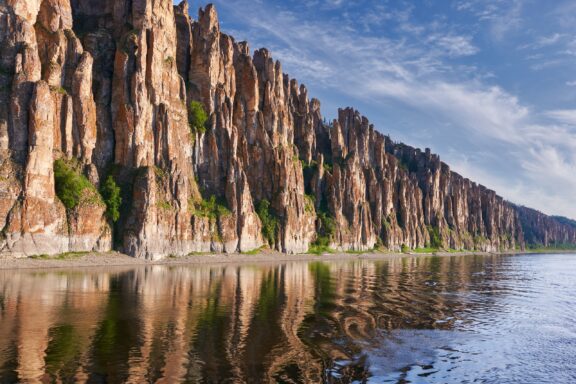
Length: 4,400 km (2,736 mi)
Located in Russia’s Far East, the Lena River is the longest river to be located entirely within the country. The Lena originates near Russia’s Baikal Mountains and flows northeast through the country before reaching the Arctic Ocean. One suggested theory for the origin of the river’s name is that it comes from an Even-Evenk name meaning “the Large River.”
One striking feature along this super-long river is found in the Lena Pillars Nature Park, a UNESCO World Heritage Site since 2012. The impressive pillars reach a height of roughly 100 m (328 ft) and were formed as a result of the area’s extreme annual temperature range.
10. Amur
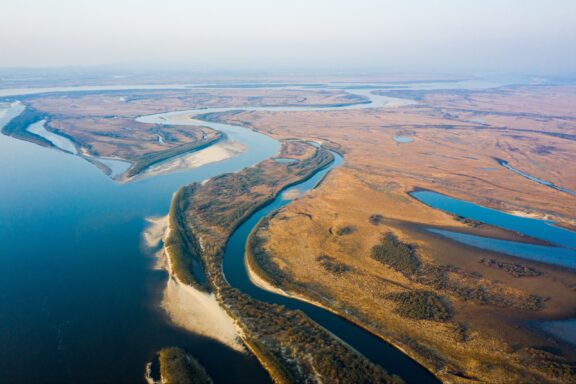
Length: 4,444 km (2,763 mi)
Rounding out the top ten longest rivers in the world is the Amur, which describes the border between Far East Russia and Northeastern China in addition to passing through a portion of Mongolia, where its headwaters are located. The river flows in a south-southeast direction and leads to the Tatar Strait.
The name of the Amur River comes from the Tungusic word for “river.” Speakers of Tungusic languages are native to Siberia and Northeast Asia, where they hunted and bred cattle in the Amur River Basin. Today, fishing is the primary economic activity, though there is also agricultural and hydroelectric potential.
9. Congo
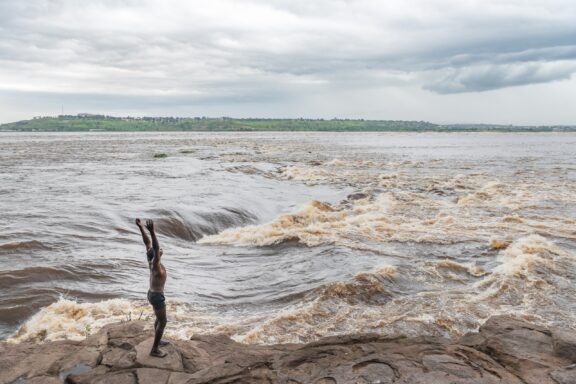
Length: 4,700 km (2,922 km)
The Congo River is an incredibly long river found in west-central Africa. It passes through nine different countries on the path from its headwaters in the highlands of northeastern Zambia to where it meets the Atlantic Ocean between the Democratic Republic of the Congo (DRC) and Angola.
The Congo is Africa’s largest river by volume and generates the most power. As such, it harnesses great hydropower potential. There are 40 hydropower projects operating on the Congo River, and the site at Inga Falls in the DRC has especially great hydropower potential.
8. Río de la Plata
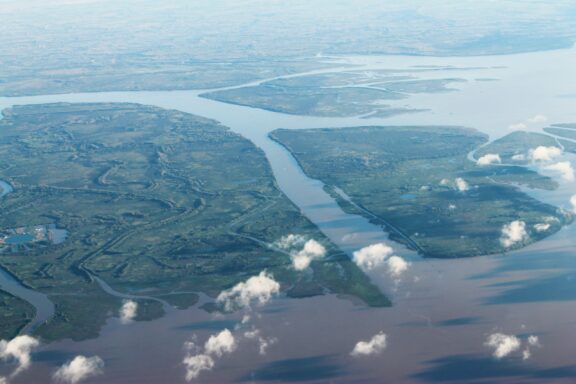
Length: 4,880 km (3,030 km)
The Paraná River system, when combined with the Río de la Plata and Río Grande, is the eighth longest in the world. These rivers originate in Brazil and flow in a southern direction before connecting with the Atlantic Ocean at the Río de la Plata estuary.
The name Paraná comes from Guaraní words that translate to “river” or “sea” in English, and Río de la Plata is Spanish that translates to “silver river” in English. The latter is also called the River Plate in English.
The Río de la Plata region had been inhabited by Indigenous peoples for thousands of years before the arrival of Europeans; the first Portuguese explorers arrived near the beginning of the 16th century. The region became a major colonial trade site in the 17th century.
7. Ob-Irtysh
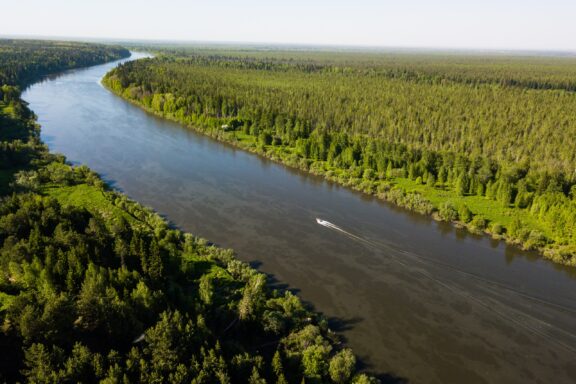
Length: 5,410 km (3,364 km)
Together, the Ob and Irtysh Rivers form the seventh longest river system in the world. Located throughout much of Central Russia, the river’s source is in the Altai Mountains, and it drains into the Arctic Ocean’s Kara Sea at the Gulf of Ob.
The river is a major part of Russia’s topography and is economically significant as a source of hydroelectric power, irrigation, transportation, and fishing. The largest city on the river’s banks is Novosibirsk, which is the third largest city in Russia.
While most of the Ob and Irtysh Rivers are located in Russia, they also pass through parts of Kazakhstan, China, and Mongolia.
6. Yellow
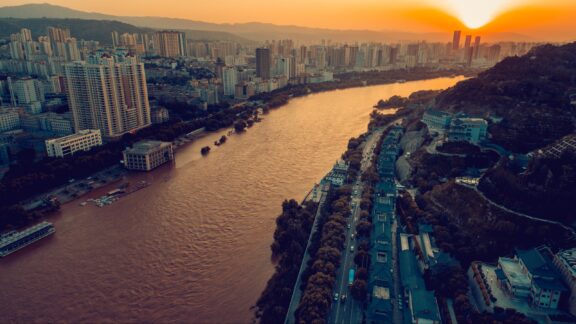
Length: 5,464 km (3,395 km)
The Yellow River is the sixth longest river in the world and the second longest located entirely in China. The ancient Chinese Yellow River civilization originated in the Yellow River Basin, which would go on to influence East Asian civilization. The location was ideal because the river provided transportation, irrigation, and food.
Today, the river remains an important symbol of Chinese heritage and economic development. The river is subject to major floods and rerouting, and floods in 1931 caused the deaths of millions of Chinese. The Chinese government has since made efforts to control flooding and improve water quality.
5. Yenisei
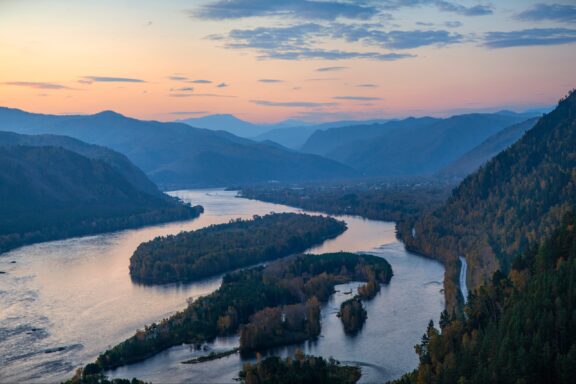
Length: 5,539 km (3,445 km)
Bigger than the Ob and Lena Rivers, the Yenisei is the largest river to drain into the Arctic Ocean. If the Great Yenisei is considered the true source of this river, as in this list, then it rises in Western Mongolia before traversing the border between eastern and western Siberia on its way to the Kara Sea.
There are 55 native species of fish in the Yenisei River, and notable tree species like the Siberian Pine and Siberian Larch populate the river banks.
Another notable feature of the ecosystem is the Taimyr reindeer, the largest herd in the world, that migrates to winter grazing grounds along the river.
4. Mississippi
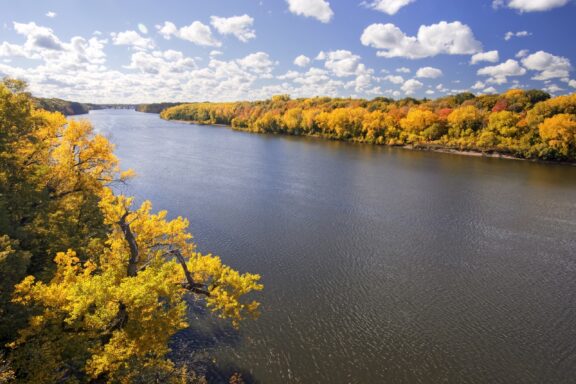
Length: 6,275 km (3,902 mi)
The Mississippi River is the longest river in North America. The watershed of the Mississippi River is massive and drains parts of two Canadian provinces and 32 US states, eventually emptying into the Gulf of Mexico at the Mississippi River Delta.
As a source of transportation, trade, water, and food, the river’s banks were inhabited by Indigenous peoples for thousands of years before the arrival of Europeans. The Indian Removal Act of 1830 forced the relocation of Indigenous groups settled east of the river.
Today, the Mississippi River is used heavily for transporting goods across the United States and is also popular for activities.
3. Yangtze
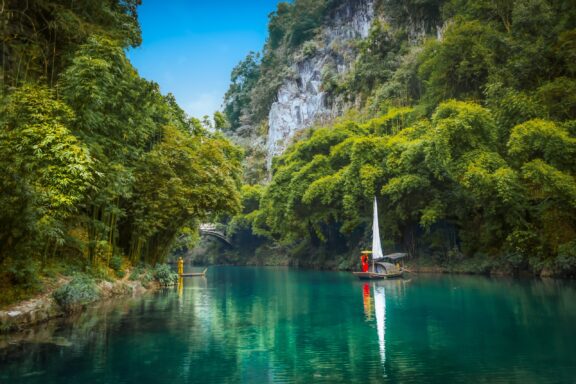
Length: 6,300 km (3,917 mi)
The Yangtze River is the longest in Europe and Asia and the third longest in the world. The river flows in an eastward direction across China, originating in the Tanggula Mountains of the Tibetan Plateau and finally reaching the East China Sea after 6,300 km.
The Yangtze River Basin area is massive and home to one-third of China’s population. Major Chinese cities like Chongqing, Wuhan, and Shanghai lie along the banks of the Yangtze, which helps to make it a vital transportation source.
There are many different animal species that live in this river, many of which are endemic. One of these is the Yangtze River Dolphin, which is in danger of becoming extinct due to human activities like sand dredging.
2. Amazon
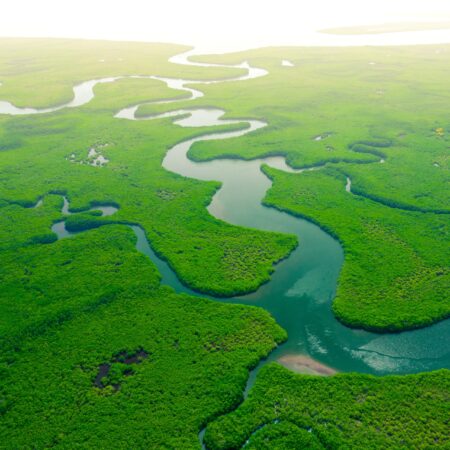
Length: 6,400 km (3,976 mi)
The Amazon is the second longest river in the world, stretching for 6,400 km across South America. This is disputed by some scientists, however, who claim it is longer than the Nile.
The river system flows through seven different countries in South America, covering some of the most biodiverse regions in the world. Its headwaters are located in the Andes Mountains in Peru, and it empties into the Atlantic Ocean along the northeastern coast of Brazil.
As a food and water source for the people and wildlife that live in its basin, the Amazon River is a vital resource. Deforestation, mining, and climate change are among the threats to the river’s health, and conservation efforts are ongoing.
1. Nile
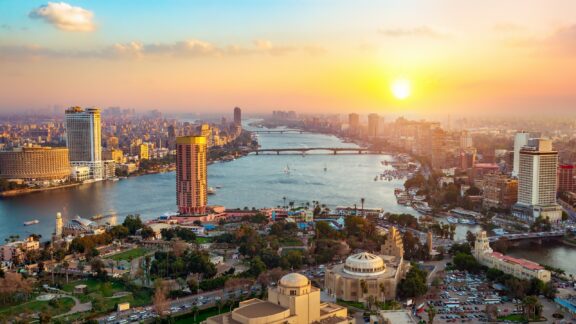
Length: 6,650 km (4,130 mi)
The longest river in the world is the Nile, which flows in a northerly direction across northeastern Africa. The two major tributaries of the Nile, the White Nile and the Blue Nile, converge in Sudan before crossing into Egypt and eventually joining the Mediterranean Sea via the Nile Delta.
The Nile has significant cultural and historical value, as it played a central role in the development of the ancient Egyptian civilization. In fact, it is likely one of the first places in the world to develop irrigation. It continues to be a vital source of irrigation and hydroelectric power for people in the region today.